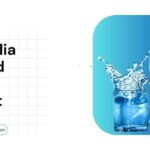Recent studies unequivocally confirm the widespread presence of PFAS in reusable feminine hygiene products, with intentional use detected in a significant portion of period underwear and reusable pads. This finding is particularly concerning given the intimate and prolonged contact of these products with the body, as risks regarding dermal absorption of PFAS, especially neutral PFAS, are rising, with some studies suggesting it could be a significant exposure pathway.
Despite these safety concerns, the reusable feminine hygiene product market is experiencing robust growth, projected to reach over USD 10 billion by 2032 (Source – Credence Research Inc), driven by sustainability trends and economic benefits. However, the industry faces substantial challenges in reformulating products, managing supply chains, and absorbing costs associated with the PFAS phase-out, while ensuring performance parity with traditional PFAS-treated materials.
A rapidly evolving global regulatory environment, with bans emerging in Europe (France, Denmark) and North America (California, New York, Colorado, Maine, Iowa), is compelling manufacturers to accelerate their transition to PFAS-free alternatives. Consumer trust and purchasing decisions are increasingly influenced by transparent labeling and third-party certifications regarding PFAS content, underscoring the need for clear communication from brands.
Definition and Properties of PFAS (“Forever Chemicals”)
Per- and Polyfluoroalkyl Substances (PFAS) represent a diverse group of human-made chemicals, numbering in the thousands, characterized by exceptionally strong carbon-fluorine bonds. These bonds impart unique properties, including resistance to heat, grease, and water, making PFAS highly valuable in various industrial and consumer applications such as water-resistant fabrics, nonstick cookware, and personal care products. While common types like perfluorooctanoic acid (PFOA) and perfluorooctane sulfonic acid (PFOS) have been phased out from commercial products, they persist in the environment from historical uses, and many replacement PFAS compounds are now widely utilized. Their inherent chemical stability leads to extreme persistence in the environment, earning them the moniker “forever chemicals,” as they are capable of accumulating in air, soil, water (including drinking water), and human and animal tissues.
The Paradox of Sustainability and Hidden Chemicals
The fundamental appeal of reusable feminine hygiene products lies in their promise of environmental sustainability, aiming to mitigate the ecological footprint of disposable alternatives. However, the recent scientific confirmation of PFAS, known as “forever chemicals” due to their environmental persistence and adverse impacts , within these very products introduces a profound contradiction. This presence directly undermines the core sustainability claim, as PFAS-containing reusable products will eventually contribute to long-term environmental pollution at their end-of-life. This situation creates a critical challenge for the industry, potentially eroding consumer trust and complicating the perceived environmental benefits. It necessitates a redefinition of “sustainability” within this product category to explicitly include “PFAS-free” as a fundamental criterion, compelling brands to demonstrate genuine commitment to environmental and health safety beyond mere reusability.
Presence and Implications of PFAS in Reusable Feminine Hygiene Products
A pivotal study, published in Environmental Science & Technology Letters, conducted an investigation into 59 reusable feminine hygiene products across five categories, sourced from North America, South America, and Europe. The research unequivocally confirmed the presence of PFAS in these products, with levels indicating intentional use in nearly 30% of the samples. Specifically, period underwear (33%) and reusable pads (25%) demonstrated the highest rates of intentional PFAS use, identified by total fluorine levels exceeding 110 ppm. Some samples, particularly period underwear, even showed concentrations above 1000 ppm, which is characteristic of polymeric PFAS used for waterproof coatings.
A more targeted analysis of 19 selected products revealed PFAS in 100% of the extracted samples. The most abundant compounds identified were 6:2 and 8:2 fluorotelomer alcohols (FTOHs). Notably, 8:2 FTOH, frequently found in North American products, is concerning because it can metabolize into the more toxic PFOA once inside the human body. A critical finding of the study was the observation that at least one product in each tested category did not contain intentional fluorine, strongly suggesting that the inclusion of PFAS is not a technical necessity for the effective functioning of these reusable products.
The research distinguishes between low-level PFAS presence, potentially from packaging or cross-contamination (“non-intentionally fluorinated”), and high levels indicative of “intentional use”. The fact that a significant portion of products shows intentional PFAS incorporation, juxtaposed with the crucial finding that PFAS-free alternatives already exist and function effectively , reveals a deliberate manufacturing choice. This is not merely an unavoidable consequence of supply chain contamination but an active decision to utilize these chemicals. This places a significant ethical and market responsibility squarely on manufacturers. Continued intentional use of PFAS, despite the availability of safer alternatives, exposes companies to heightened consumer backlash, potential regulatory enforcement, and increased litigation risk, as exemplified by the $5 million settlement in a lawsuit against a period underwear brand. It underscores that industry transition to PFAS-free is not just feasible but imperative for maintaining brand reputation and avoiding legal liabilities.
PFAS Detection in Reusable Feminine Hygiene Products
|
Product Category |
Number of Products Tested |
% with Intentional PFAS Use (>110 ppm total fluorine) |
% with PFAS Detected (targeted analysis) |
Most Abundant PFAS Compounds |
Key Finding |
|
Period Underwear |
59 (across 5 categories) |
33% |
100% (of 19 selected) |
6:2 and 8:2 Fluorotelomer Alcohols |
PFAS use is unnecessary |
|
Reusable Pads |
59 (across 5 categories) |
25% |
100% (of 19 selected) |
6:2 and 8:2 Fluorotelomer Alcohols |
PFAS use is unnecessary |
|
Other Categories* |
59 (across 5 categories) |
At least one product in each category |
100% (of 19 selected) |
6:2 and 8:2 Fluorotelomer Alcohols |
PFAS use is unnecessary |
Health Risks and Dermal Absorption
PFAS exposure has been epidemiologically linked to a wide array of serious health effects, including altered immune and thyroid function, liver disease, lipid and insulin dysregulation, kidney disease (including diminished glomerular filtration and chronic kidney disease, and kidney cancer), adverse reproductive and developmental outcomes, and other cancers (e.g., testicular cancer). Long-chain PFAS, such as PFOA and PFOS, are particularly concerning due to their propensity to concentrate in renal tissues, indicating potential nephrotoxicity. While common exposure pathways include contaminated drinking water, food, and dusts , there is growing concern about dermal absorption from consumer products.
Specific Concern: Dermal Absorption from Feminine Hygiene Products
Feminine hygiene products are worn in close and prolonged contact with the skin, including the highly permeable vaginal tissue, which acts as a “fast track directly to your bloodstream”. This direct absorption bypasses the body’s natural filtering mechanisms like the liver and digestive system. Although historically considered a minor exposure route, recent studies suggest dermal absorption may be a significant pathway, especially for neutral PFAS, which may be more likely to pass through skin.
In vitro studies using porcine skin, a model known to correlate well with human skin, have demonstrated that perfluorocarboxylic acids (PFCAs) like PFOA, PFHxA, and PFBA can permeate skin within an 8-hour duration. PFBA showed the highest absorption (38.4 ng/cm² in artificial perspirant), while PFOA absorbed the least (8.8 ng/cm² in acetone) among the tested compounds. A critical finding is that PFAS compounds can remain in the skin, acting as a reservoir, which could lead to prolonged exposure even after product removal. Preliminary evidence suggests that washing skin afterward might help reduce residual exposure. PFAS exposure has unique impacts on women and girls, notably interfering with the endocrine system, which can affect reproductive health (e.g., increased risk of endometriosis, reduced fertility, and pregnancy complications) and elevate the risk of breast and ovarian cancers. Furthermore, PFAS can transfer from mother to infant through breast milk, posing significant health risks to newborns, including developmental delays, weakened immune systems, and hormone disruption.
The conventional understanding of PFAS exposure primarily focused on ingestion and inhalation. However, emerging research strongly indicates that dermal absorption, particularly from products in prolonged and intimate contact with highly permeable tissues like the vaginal lining , could be a significantly underestimated exposure pathway. This is further compounded by the specific vulnerabilities of women and girls, including reproductive health impacts and the potential for PFAS transfer via breast milk to infants. The current limited knowledge on dermal absorption of PFAS from these products represents a critical data gap. This necessitates an urgent re-evaluation of the risk assessment for feminine hygiene products. Regulators and manufacturers must prioritize comprehensive, targeted studies on dermal absorption from these specific products, especially for neutral PFAS, to accurately quantify exposure. This heightened understanding will likely lead to more stringent product safety standards and accelerate the imperative for manufacturers to ensure truly PFAS-free formulations to protect particularly vulnerable populations such as adolescents, young women, and infants.
Dermal Absorption Characteristics of Select PFAS Compounds (In Vitro Studies on Porcine Skin)
|
PFAS Compound |
Absorption Amount (ng/cm² after 8h) – Artificial Perspirant |
Absorption Amount (ng/cm² after 8h) – Acetone |
Permeability Coefficient (cm/h) – Artificial Perspirant |
Permeability Coefficient (cm/h) – Acetone |
Key Observation |
|
PFBA |
38.4 ± 14.4 |
36.4 ± 7.1 |
2.70 × 10⁻⁴ |
2.54 × 10⁻⁴ |
Highest absorption; molecular size inversely proportional to permeability. |
|
PFHxA |
17.1 ± 3.9 |
14.6 ± 2.6 |
1.31 × 10⁻⁴ |
1.72 × 10⁻⁴ |
Intermediate absorption; molecular size inversely proportional to permeability. |
|
PFOA |
16.6 ± 3.2 |
8.8 ± 1.5 |
8.28 × 10⁻⁵ |
5.73 × 10⁻⁵ |
Lowest absorption; molecular size inversely proportional to permeability; compounds can remain in skin as a reservoir. |
Environmental Impact
PFAS are characterized as “forever chemicals” due to their extreme resistance to degradation and high mobility in water, soil, and groundwater. At their end-of-life, PFAS-containing reusable products, despite their initial sustainability appeal, still contribute to pervasive environmental pollution. PFAS can leach from landfills into groundwater and surface water, contaminating irrigation and drinking water systems. The textile sector is a major contributor to global PFAS pollution, accounting for approximately 35% of total global PFAS demand and an estimated 41,000 to 143,000 tonnes in the EU alone.
Both polymeric and non-polymeric PFAS can be released throughout a product’s lifespan, notably during washing cycles. A significant environmental challenge is that conventional wastewater treatment plants typically lack the advanced technologies required to effectively capture and destroy PFAS, resulting in their continued release into waterways. Short-chain PFAS, in particular, are highly mobile and persistent in water, posing ongoing risks. The presence of PFAS in textiles also poses a substantial barrier to achieving a circular economy. These chemicals can render end-of-life textile materials “hazardous,” complicating or preventing their effective recycling and potentially contaminating new products during the recycling process.
Key Global PFAS Regulations Impacting Textiles & Consumer Products
|
Region/Country |
Regulation Name/Law |
Product Categories Impacted |
Key Provisions |
Effective Date(s) |
Status |
|
Europe | |||||
|
EU-wide |
PFAS Restriction Proposal |
Broad consumer & industrial applications |
Comprehensive regulation, takes precedence over national bans |
In legislative process since 2023 |
Proposed |
|
France |
Law No. 2025-188 |
Cosmetics, textiles, ski waxes (clothing, footwear, waterproofing agents) |
Ban on PFAS; tax on manufacturers for PFAS discharges (EUR 100/100g) |
Jan 2026 (cosmetics, textiles, ski waxes), Jan 2030 (all textiles) |
Enacted |
|
Denmark |
PFAS Action Plan |
Clothing, footwear, waterproofing agents |
Ban on PFAS |
July 2026 (anticipated publication) |
Proposed |
|
CEN |
EN 17681-1:2025 |
Textiles and textile products |
Updated test method for PFAS analysis (alkaline hydrolysis) |
June 2025 |
Published |
|
North America | |||||
|
California |
AB 1817 |
New textile articles |
Prohibits intentionally added PFAS or above threshold; certificate of compliance required |
Jan 1, 2025 |
Enacted |
|
New York |
Apparel Ban |
New apparel |
Ban on intentionally added PFAS; comprehensive ingredient disclosure for menstrual products |
Jan 1, 2025 |
Enacted |
|
Colorado |
Phased Ban |
Outdoor clothing (severe wet conditions), textile articles (household/business) |
Phased prohibition with disclosure initially, then ban |
Jan 1, 2028 |
Enacted |
|
Maine |
LD 1537 |
All consumer products |
Prohibits intentionally added PFAS |
Jan 1, 2023 (some), Jan 1, 2032 (all) |
Enacted & Proposed |
|
Iowa |
HF 588 (Proposed) |
Feminine hygiene products, carpets, cleaning products, cookware, cosmetics, etc. |
Prohibits intentionally added PFAS in all products |
Jan 1, 2032 |
Proposed |
|
Federal (U.S.) |
FCRAA (Proposed) |
Carpets, textile treatments, food packaging, cosmetics, clothing, etc. |
Gradual ban on non-essential PFAS uses; annual reporting |
1-10 years post-enactment |
Proposed |
|
Asia | |||||
|
Japan |
CSCL Ministerial Ordinance No. 4 |
138 PFAS substances, finished goods, components |
Ban on manufacture, import, use; classified as Class I Specified Chemical Substances |
Jan 10, 2025 |
Enacted |
|
South Korea |
Ministry of Environment Notification |
Daily-use consumer chemical products |
New safety verification and labeling standards |
June 2025 |
Notified (WTO) |
Impact on Industry
Manufacturers, importers, and retailers must proactively prepare for significant supply chain disruptions and complex reformulation challenges as PFAS are phased out. Compliance requires businesses to remain highly informed and agile, rapidly adapting their supply chains to the continuously evolving regulatory landscape.
The shift towards comprehensive substance-level data collection is becoming the new industry standard for ensuring compliance and mitigating risks, moving beyond reactive responses to proactive strategic decision-making. The financial and reputational penalties for non-compliance can be substantial, including import bans, product seizures, criminal charges for companies and executives, and suspension of business licenses. The current lack of global regulatory harmonization creates a complex “patchwork of rules” that international brands must navigate, adding layers of complexity to product development and market entry strategies.
The information clearly illustrates a fragmented yet rapidly accelerating global regulatory landscape, where individual states and countries (e.g., California, New York, France, Japan) are enacting PFAS bans and restrictions independently and often ahead of broader federal or EU-wide regulations. While this “patchwork of rules” undeniably creates operational complexity for global manufacturers, it also functions as a powerful catalyst for change. To avoid market exclusion in leading regions, companies are compelled to adapt to the most stringent regulations, effectively pushing the entire industry towards PFAS-free alternatives at a faster pace than a slower, harmonized approach might. This dynamic simultaneously creates a significant opportunity for early adopters to differentiate their brands and gain a competitive advantage. Regulatory fragmentation, despite its inherent challenges, is inadvertently accelerating the global transition to PFAS-free materials. Companies that proactively comply with the strictest regulations across their international operations will not only ensure market access but also establish themselves as leaders in sustainability and safety. This suggests a future where PFAS-free products developed for highly regulated markets will likely become the de facto standard globally, driving broader market transformation and setting new benchmarks for product safety.
Consumer Perception, Trust, and Labeling
Consumers have increasingly gravitated towards reusable feminine hygiene products, driven by their perceived eco-friendliness and health benefits. However, the recent scientific confirmation of PFAS presence in these products has ignited significant concern over potential chemical exposure, particularly distressing for consumers who specifically chose these products for their health and environmental consciousness. Media headlines, such as those highlighting “toxic chemicals” in fast fashion and menstrual products, have significantly heightened public awareness of PFAS risks, contributing to a more discerning consumer base. A major source of anxiety for consumers is the limited understanding surrounding the risks of dermal absorption from prolonged and intimate contact with these products. The revelation that PFAS are not essential for product functionality may lead to a sense of betrayal among consumers who believed they were purchasing genuinely safe and eco-friendly alternatives.
Importance of Transparent Labeling
Currently, there is no federal labeling requirement for PFAS in menstrual products in the U.S., and only a handful of states have initiated legislation in this regard. The FDA classifies menstrual products as medical devices, which historically exempts them from the same stringent ingredient labeling laws applied to other consumer goods, although companies retain the option for voluntary disclosure.
New York’s pioneering 2021 law, followed by similar legislation in California, mandating the disclosure of all intentionally added ingredients in menstrual products, has already revealed the presence of concerning substances, including potential carcinogens, reproductive toxicants, endocrine disruptors, and allergens. Consumers often operate under the assumption that products available on shelves have undergone thorough government vetting for safety, yet the FDA’s review process has been critically described as “basically a rubber stamp”. Increased transparency from manufacturers, including clear and comprehensive labeling, is paramount for empowering consumers to make truly informed decisions about the materials used in the products they purchase for themselves and their families. Third-party certifications, such as Intertek’s PFAS-Free Certification, play a crucial role by providing independent verification and credibility. These certifications reassure consumers, retailers, and business partners that PFAS-free claims are trustworthy and verifiable through rigorous testing (e.g., Total Organic Fluorine below detectable limits) and material data audits.











